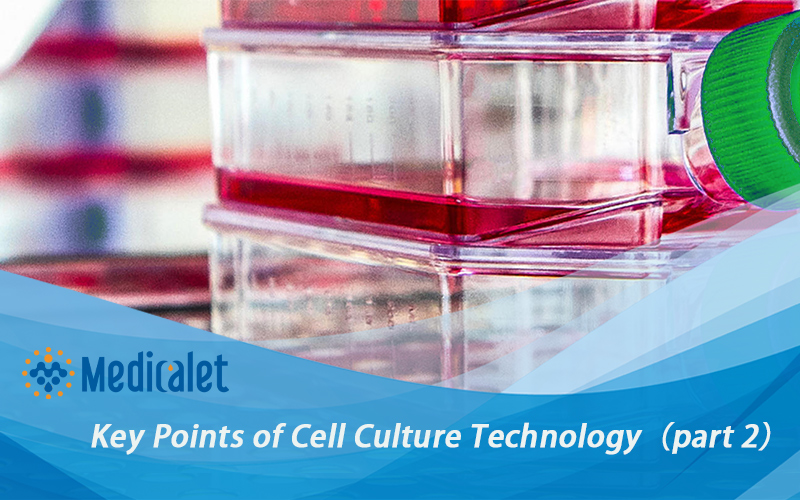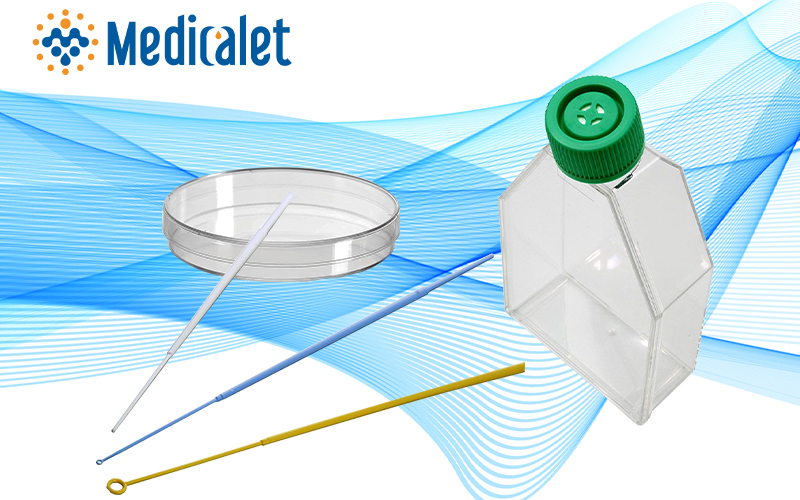
Culturing parameters
The third factor influencing reproducibility is the culturing parameters.
Oxygen levels, for example, significantly impact the cultured cells. However, the variables impacting oxygenation, e.g. culture chamber specifications or cell density, aren't always documented, and therefore can't be kept consistent.7
Another important culturing parameter is the culture medium. This provides the necessary nutrients, growth factors and hormones, and regulates the pH and osmotic pressure. It is therefore of utmost importance that its composition is always the same. This is especially demanding for culture media formulations supplemented with fetal bovine serum (FBS), the composition of which depends on factors such as the cow's diet, geographical location and time of year. To minimize the impact of FBS on the reproducibility of your results, you should order different batches of serum when your current stock starts to run low and test them to find the closest match. In order to allow others to reproduce your results, you should report how you screened the serum, and record the lot numbers.
Handling of cells
Most researchers are aware that culturing parameters have a huge impact on their applications, but variations in handling techniques are often overlooked. Read our detailed article on cell culture handling to learn how to further improve reproducibility.
Contamination
When cells are isolated from tissues to be cultured in the lab, they are no longer protected by the immune system, and are therefore highly vulnerable to contamination.
The first source of contamination is non-living contaminants, such as impurities in media, sera, supplements or water, as well as endotoxins and leachables. Preventive measures include using laboratory-grade water for cell culture experiments, and media, sera, supplements and consumables from manufacturers that provide endotoxin testing certification.2,9 Moreover, it's important that consumables are made from virgin polystyrene or polypropylene, to ensure that plastic additives don't leach into your cell culture.
The second source of contamination is biological contaminants, such as bacteria (including mycoplasma), fungi and yeasts. Learn how to detect and prevent these by reading our extensive article on cell culture contamination.
Viability
Cell viability is defined as the proportion of live cells in a sample. Besides the contaminants we've just looked at, there are various other factors that impact cell viability. The environmental conditions – temperature, pH, osmotic pressure, nutrient supply, and O2 and CO2 concentration – are very important. Most of these variables are controlled by the culture medium, and are cell type specific, which unfortunately means that we can't provide specific guidelines.2
As cells are very sensitive to stress, you not only have to keep an eye on the environmental conditions, but also on your liquid handling techniques. More information on the influence of stress, and how to reduce it, can be found in our viability article.
The last factor influencing cell viability is senescence. Most finite cell lines can survive between 20 and 60 divisions before dying, which means that they can only be used reproducibly between 15 and 45 generations.6 After that, it will be necessary to thaw a cryopreserved sample from the cell bank. Continuous cell lines can proliferate indefinitely but, as they are prone to genetic drift, they should be replaced periodically.
Detection assays using colorimetric, fluorescence and bioluminescence approaches are available to measure cell viability. A commonly used colorimetric method is the MTT assay, based on the reduction of yellow tetrazolium salt to purple formazan crystals by viable cells. Check out our application note on how to automate MTT assays to learn more.
Automation
Many of the above-mentioned challenges could be solved by automating cell culture workflows. Cell handling, for example, would always be consistent, having a positive impact on the reproducibility and viability. On top of that, automation reduces the risk of contamination from the user.
Despite these advantages, it can be challenging to automate the entire workflow, for budget reasons, because there's no space for robots, or because there aren't enough resources to automate and validate each step at once.

Medicalet can provide you with the best Cell and Tissue culture product. Medicalet laboratory equipment is outstanding in terms of innovation, ergonomic, design and functionality, providing worldwide users efficiency and comfort in their daily work.
If you are interested in our products, please feel free to contact us and ask for samples!
